Model of a fully restored Pinnace Virginia in the Workshop in Bath
The Popham Colony on the Kennebec River was the first organized attempt to establish a permanent English settlement in what we now call New England. The French had their own colony on an island in the St. Croix River, between Maine and New Brunswick, in 1604.
The Plymouth Company was granted the northern coast of North America, from about New York City to New Brunswick, in which to establish a colony. (The Virginia Company was granted the same authority to the south and established the Jamestown Colony.)
Two ships left England on May 31, 1607 with about 100 colonists and their supplies. In August they arrived at Pemaquid, returning a native, Skidwarres, who had been captured by George Weymouth in 1605. Hoping this would bring good relations with the local population, the colonists were disappointed since they were viewed with suspicion.
On August 18th, after exploring portions of the Kennebec River, then called the Sagadahoc, the colonists chose Sabino Head at the mouth of the river for their settlement in what is now the town of Phippsburg. They immediately began construction of Fort St. George and, within it, a storehouse for their supplies. The accompanying plan of the fort is sometimes known as the “John Hunt” version, after one of the colonists of that name. It has also been described as “The Draught of St. George Fort Sent to Phillip III by Ziniga in his Letter of September 10, 1608.” [See MPBN reference below.]
By December it became clear that neither shelter nor supplies was adequate to serve all the colonists during the coming winter. On the sixteenth of that month, fifty returned to England. The remainder had a difficult time surviving until spring. In fact, George Popham, President of the colony, died in February.
They built the first sailing vessel in North America, the Virginia of Sagadahoc. The Virginia, Maine’s first ship, was a 30 ton pinnace – a shallow draft, decked vessel, with a rounded bow and square stern. This type of boat was designed to sail or row.
A small scale model of the Virginia has been completed by Maine’s First Ship, an organization in Bath. A full scale reconstruction project is underway. In September of 2018, progress in the large work space in Bath looked like this:
Although supply ships arrived in May, the colonists were discouraged and were unable to face another Maine winter. In September or October of 1608 the colonists returned to England in the Virginia and the Mary and John, one of the original ships that brought
them to Popham a year earlier.
Since the 1960s the site of the colony and the fort have been investigated and excavated by archaeologists, with impressive findings giving insights into the lifestyles of the colonists. Early archaeological explorations by Wendell Hadlock and his teams attempted to follow the “Hunt Map” to confirm the location of the colony. Their efforts in the 1960s were frustratingly without success in the form of definitive evidence of the location. Some questioned whether the map was at all accurate.
In 1994, archaeologist Jeffrey Brain fielded a team to assess the site yet again. His expedition still failed to reveal clear evidence of the colony and of Fort George. Brain noted that by rotating the Hunt Map by 20 degrees east of magnetic north it fit his local topographic map very well. In 1998 and succeeding seasons, the map led to a huge trove of evidence, finally confirming the site.
Additional Resources
Brain, Jeffrey P. Fort St. George: Archaeological Investigation of the 1607-1608 Popham Colony on the Kennebec. Salem, Mass. Peabody Essex Museum. 1995.
Brain, Jeffrey P. “Fort St. George: Virginia’s Second Lost Colony.” http://www.theweboftime.com/Issue-4/Ft-stg.htm
Chandler, E. J. Ancient Sagadahoc: A Narrative History. [Maine. E.J. Chandler] c.1998.
Hume, Ivor Noël. The Virginia Adventure. New York: Alfred A. Knopf. 1994.
Maine’s First Ship the Virginia Project. Pamphlet. c. 2004. The Virginia Project. Phippsburg. http://mfship.org/Maines_First_Ship/Home.html (accessed March 12, 2011)
Morrison, Peter H. Architecture of the Popham Colony, 1607-1608: An Archaeological Portrait of English Building Practice at the Moment of Settlement. Thesis (M.A.) in History–University of Maine, 2002.
“Popham Colony.” Home The Story of Maine. Maine Public Broadcasting Network (MPBN). http://www.mpbn.net/homestom/p9pophamcolony.html (accessed March 12, 2011)
Popham Papers. Edited by Jeffrey Phipps Brain. Salem, Mass. Peabody Essex Museum, 2010.
Quinn, David B. “The Sagadahoc Colony of the Plymouth Company, 1607-1608,” New American World. New York. Arno Press. 1979. vol. III, pp. 425-465.
Tabor, Willian H. “Maine’s Popham Colony.” Athena Review, Vol.3, no.2: Peopling of the Americas. http://www.athenapub.com/popham.htm (accessed November 18, 2016)
Wilson, Margaret. Norumbega Navigators: Early English Voyages to New England and the Story of the Popham Colony. Bath, Me. Wilson Publications. c.2007.


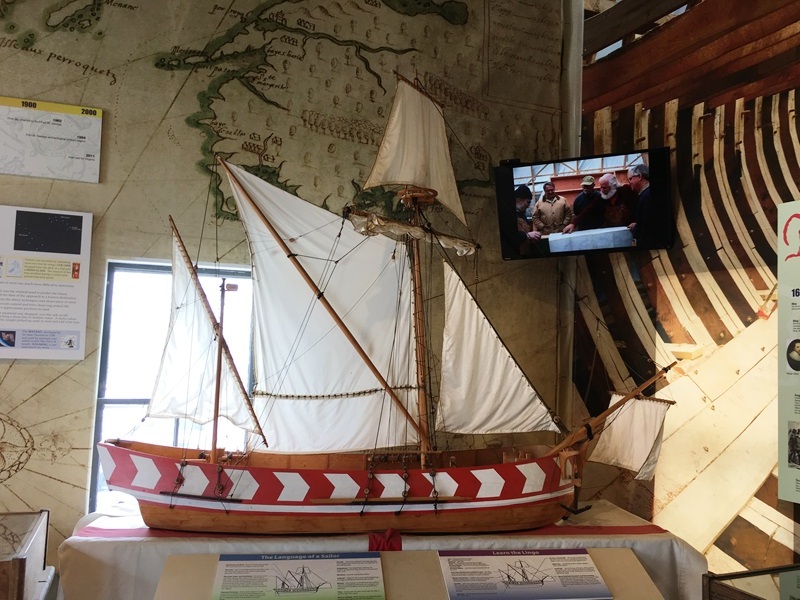
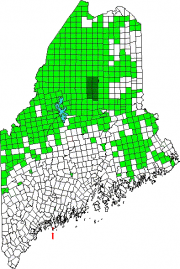
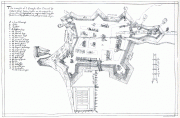
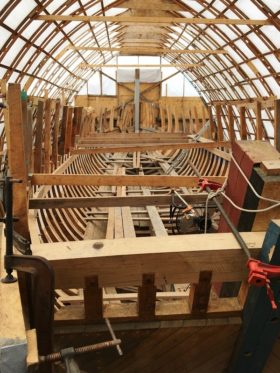
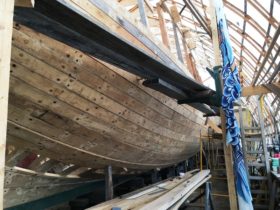
Possibly some mention should be made of the early 1960″s excavations of the supposed site of the Popham Colony, in which I participated as a student, sponsored by the Maine Parks and Rec and led by Wendell Hadlock, Director of the Farnsworth Museum in Rockland.
Thanks for the comment. It prompted the two additional paragraphs and the end of the article. Great background material in the William H.Tabor piece cited.